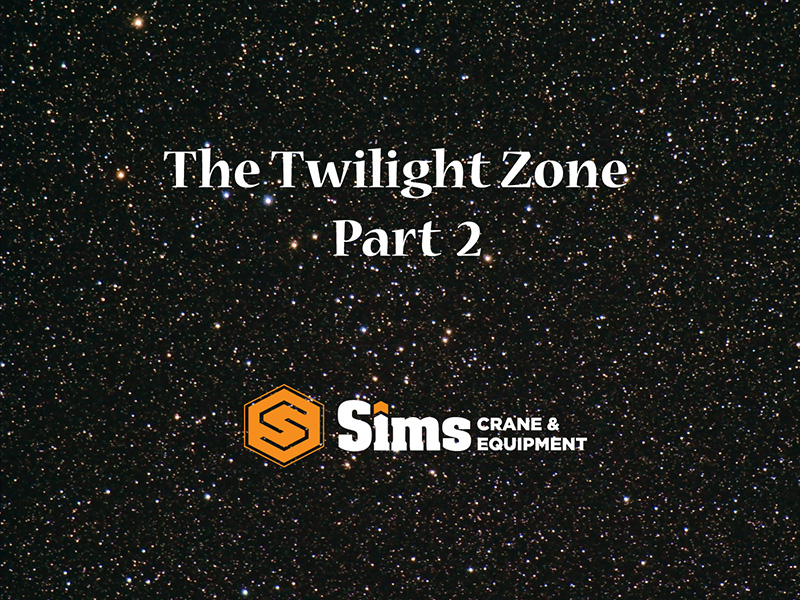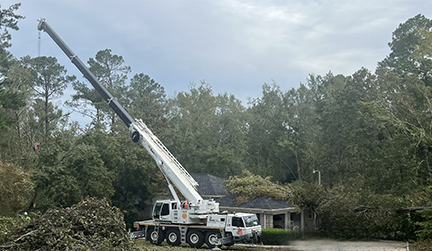
Sims Crane brings you the second part of the series written by Ron Kohner, President, Landmark Engineering Services Ltd., in which he explains the meaning and implications of the "bold line" present in the crane manufacturers' lift charts. For Part 1 click here.
The following are some of the factors that manufacturers must consider as possible limitations when they determine the ratings “above the bold line” on the chart for a given crane configuration:
1. Nominal maximum capacity of the crane (e.g. 60 tons)
The marketplace may dictate that 60-ton capacity rough terrain cranes are currently in greater demand than 80-ton models. The maximum capacity shown on the load rating chart may therefore be arbitrarily limited to 60 tons even though the hardware is capable of lifting 80 tons. Since these are not stability limits, they will be depicted above the bold line on the load rating chart.
2. Maximum number of parts of hoist line
The number of sheaves in the boom point limits the number of parts of hoist line which can be reeved and subsequently limits the crane’s capacity based on rope strength. Since these are not stability limits, they will be depicted above the bold line on the chart.
3. Allowable hoist line pull
Hydraulic pumps/motors or pneumatic clutches/brakes limit the power which the crane’s machinery can transmit to the hoist drum. Since these are not stability limits, they will be depicted above the bold line on the chart.
4. Boom hoist system hydraulic power
Hydraulic pumps/cylinders limit the force which the boom hoist system can produce/ withstand. This hydraulic force limits the crane’s ratings. Since these are not stability limits, they will be depicted above the bold line on the chart.
5. Boom suspension rope/pendant strength
The forces on boom suspension ropes and pendants increase significantly as the lifting radius increases. The strength of these components limits the crane’s ratings. Since these are not stability limits, they will be depicted above the bold line on the chart.
6. Boom telescope cylinder hydraulic power
Hydraulic pumps/cylinders limit the force which telescopes boom sections. This hydraulic force limits the crane’s ratings. Since these are not stability limits, they will be depicted above the bold line on the chart.
7. Swing bearing or house roller strength
All lifting forces from the load weight, boom weight and counterweight must be transferred through the swing bearing or house rollers to be supported by the crane’s foundation. The inherent strength of these rolling elements limits many load ratings. Since these are not stability limits, they will be depicted above the bold line on the chart.
8. Boom strength/deflection
Nearly everyone assumes that the boom is the weakest link in a crane structure and that is often true. Industry standards dictate limits for both boom stress and deflection. Since these are not stability limits, they will be depicted above the bold line on the chart.
9. Outrigger cylinder hydraulic pressure
The maximum load which can be applied to an outrigger cylinder unquestionably is a limitation for the capacity of a crane. It is often mistakenly believed that the worst loading on an outrigger occurs when working in a portion of the load rating chart limited by stability. This is generally not true. Since these are not stability limits, they will be depicted above the bold line on the chart.
10. Tire/rim/axle strength
When working on rubber, any of these components impose significant capacity limits on the crane. Since these are not stability limits, they will be depicted above the bold line on the chart.
Source: American Crane & Transport, June 2013 Issue
